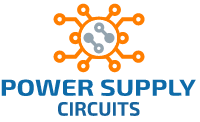The circuit allows a simple and safe charging of 1-10 Ni-Cd or Ni-MH cells from a 12V source. The voltage converter can be operated at 6V, in this case is the max. output voltage 12V (no load). The performance can be improved through the use of Schottky diodes (D2/D3). D4 (LED) can omitted if you dont want any indicator. An astable Mutivibrator generates the oscillation frequency. At the output (pin 3) connected the voltage doubler. At C5 is idling roughly double the input voltage. Thus, sufficient voltage difference exists to charge the connected batteries. Due to the high Switching frequency can be used relatively small capacitors. The charge current is indicated by a “real” load control (D4).
List of components:
| F 1 Fuse 0.5 A slow blow D1 1N4007 D2, D3 or 1N4148 Schottky Diode D4 LED red R1 2.2 K 0.25 W R2 10K .25 W R3 27R 0.5 W R4 47R 0.5 W R5 68R 0.5 W C1 47 uF 25V |
C2 68 nF C3 5nF C4 10uF 40V C5 47 uF 40V C6 100n IC 1 NE 555 Changes for 25 mA load current R5 removes R4 220R |
The battery can be connected directly to the output. The charge current depends the components used about 50 ma (maximum output power). Depending on the number of cells can vary the desired load current through R4 be adjusted. The efficiency, depending on the load current between 70 and 85%.
Caution : The maximum input voltage is 18V, and at higher voltages will damage the IC. For sure the electrolytic capacitors with rated voltage types are used (no-load voltages!)The circuit is protected against reverse polarity of the supply voltage by D1 and F1.
Application : Portable radio batteries for charging up to 12V in the car, to obtain a second charge of battery as a voltage converter etc.

